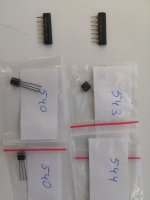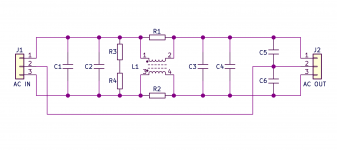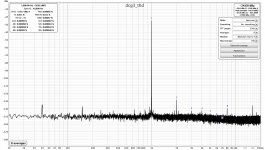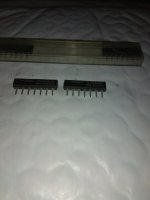For what I know, the dcg3 could in fact be just perfect and its my equipment picking up stuff?
Measurement setups are a pain about making sure of their details many times. You can even see 10dB+ higher 50Hz between a better gripping and a lesser gripping single ended test cable. Especially when fighting below -100dBV everything goes. Tiny imperfections and weak interference can take a life of their own.
One quick trick is use no test tone just noise floor, check for bad spikes, power off the DUT now and compare the new noise floor. If it changes to the better it means some internal field & loop area sensitivity was at play. Fully or partly responsible for the harmonic noise spikes, depending if better or completely gone. If its a pure ground loop between DUT and measurement setup you won't get rid of it with powering the DUT down. It circles through the signal ground and/or power ground connections. They should be revised. Change zero lines scheme and chassis grounding with the DUT connected but powered off while the FFT is running. Using its noise floor display as a compass towards a getting better direction.
Thank you Salas. I am very interested in your DCG3 preamp. I plan to build it. I will use it together with LDR Pre MkII. I'll start by creating a project in Altium Designer. P.S. There will probably be a lot of questions, I hope for your help.
LDR adds second harmonic vs conventional types of attenuator. You know that. It can be enjoyable but not the most neutral choice.
In any case, there is a huge desire to try. There is a relay ladder attenuator. It will be possible to compare them. There are paired transistors. Not quite sure about the authenticity of uPA68. Ordered a long time ago, the seller sent different batches. you need to find where it was described how to check uPA68. (500 pages, not an easy task)
Does it make sense to add an EMI filter before the power transformer?
Does it make sense to add an EMI filter before the power transformer?
Attachments
Last edited:
Does it make sense to add an EMI filter before the power transformer?
Not necessary. DCSTB filters much EMI.
Just use good transformers with electrostatic screen. With Gauss belt (band) also if possible.
the cheap and easy way to test Idss is to use a 9V battery, a 100r resistor and a DMM voltmeter.
Short the Source and Gate leadouts together with a croc clip and lead.
Connect this G+S to battery negative.
Use a second lead to the 100r resistor.
Use a third lead from resistor to Drain leadout.
Measure the voltage drop across the 100r.
BTW,
the different batch codes probably indicate you have genuine devices.
Is this method correct for checking uPA68?
Hacking around with different cables etc.
Still no change to the dcg3. Have to get the measurement basics right..
Think we are close to something good here 🙂
I am able to find some odd harmonics and it actually depends on the volume settings on the muses volume control.
Still no change to the dcg3. Have to get the measurement basics right..
Think we are close to something good here 🙂
I am able to find some odd harmonics and it actually depends on the volume settings on the muses volume control.
Attachments
Last edited:
Is this method correct for checking uPA68?
Only for IDSS checking. I have also posted curves in reply #33. You can't see curves and noise spec with simple methods. When in doubt ask Tea Bag to send you surely good uPAs. Or use Toshiba separates if you have any authentic 2SK117 2SK170. Linear Systems LSK170 also OK. Any quad of no less than 4mA IDSS within 1mA tolerance between units.
Think we are close to something good here 🙂
I am able to find some odd harmonics and it actually depends on the volume settings on the muses volume control.
This chart at this particular output level has very well groomed grass.
I think that i have fake too.
I have bought this from same seller that i have bought genuine in the past.
I have bought this from same seller that i have bought genuine in the past.
Attachments
Last edited:
Legs shape features and position of print are suspicious in Crazoff's. In yours the legs seem to miss the saw tooth like feature very close to entering the plastic base. Print is more proper in yours.
These scratches on the feet are very strange. As if they came from somewhere that was placed on bases
These scratches on the feet are very strange. As if they came from somewhere that was placed on bases
Or from a test machine during production. Not dipped in solder coating afterwards. The big older Japan ones have solder. Yours have some chances to be good. Crazoff's look more off.
A faker's delight example. Has combined slim shape features from Singapore ones with random fonts positioned low without any ten digit code even, but also slapped Japan on it for making a good impression. 😀


1 037,03 руб. | UPA68HA UPA68H ZIP-7 Новый и оригинальный
UPA68HA UPA68H ZIP 7 New and Original|Connectors| - AliExpress
Fake?
UPA68HA UPA68H ZIP 7 New and Original|Connectors| - AliExpress
Fake?
- Home
- Source & Line
- Analog Line Level
- Salas DCG3 preamp (line & headphone)



